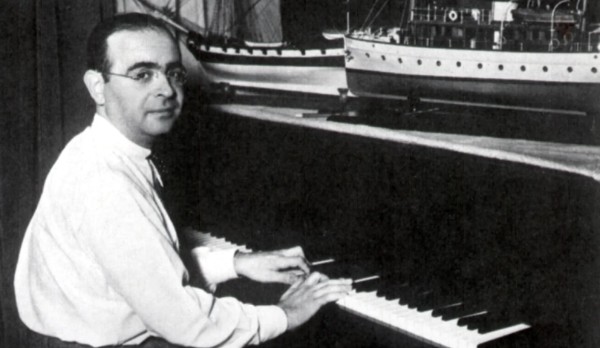Arguably, the person who composer Claude Debussy loved most in the world was his daughter, Claude-Emma.
Father and daughter were extremely close and extremely like each other. Claude was inspired by fatherhood to write several of his most famous works, and Claude-Emma herself grew to be a very talented musician.
However, during the apocalypse of World War I, their intertwined stories turned deeply tragic. By 1919, both were dead.
Today, we’re looking at the story of this touching father-daughter relationship.
The Breakdown of Debussy’s First Marriage
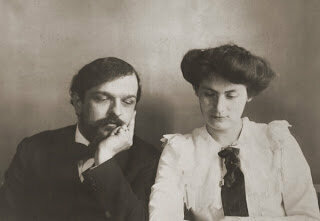
Debussy and Lilly
In October 1903, the newly married Claude Debussy came to visit the musical salon of singer and banker’s wife Emma Bardac.
At first, Claude brought his wife Lilly with him. However, the introverted Lilly disliked being around the gregarious, confident Emma, so Claude started going to the Bardacs’ on his own.
The following summer, he drifted away from Lilly emotionally and went on vacation with Emma to the island of Jersey. He stepped away from the marriage and wrote Lilly a letter explaining that the marriage was over.

Claude Debussy with Emma Bardac
A devastated Lilly shot herself in despair but survived. Claude talked with her doctors, but when he found out that Lilly was going to live, he returned to Emma. He also refused to pay for her medical bills. Even for fin de siècle France, this callousness caused a scandal.
Emma became pregnant with Debussy’s child in very early 1905. She divorced Sigismond in May, and Claude divorced Lilly in August.
The Birth of Chouchou
In the early stages of Emma’s pregnancy, Claude was working on his orchestral piece La Mer (“The Sea”).
Debussy: La Mer
Although it would eventually become one of his most famous works, upon its premiere, La Mer was not particularly well-received. “I do not hear, I do not see, I do not smell the sea,” critic Pierre Lalo complained.
La Mer was premiered on 15 October 1905. Two weeks later, on 30 October 1905, Claude-Emma was born.
She was named after both of her parents, but her nickname soon became “Chouchou” (“little cabbage”).
The nickname originated with Claude and Emma’s nicknames for each other. Claude called Emma “mon chat” (“my cat”), while Emma called him the similar-sounding “mon chou” (“my cabbage”). It made sense for their daughter, who shared both of their names, to inherit a form of one of their nicknames, too.
“I have been, for a few days, the father of a little girl – the joy of which has somewhat knocked me over and leaves me a bit fearful,” he wrote to musicologist Louis Laloy.
What Was Chouchou Debussy Like?
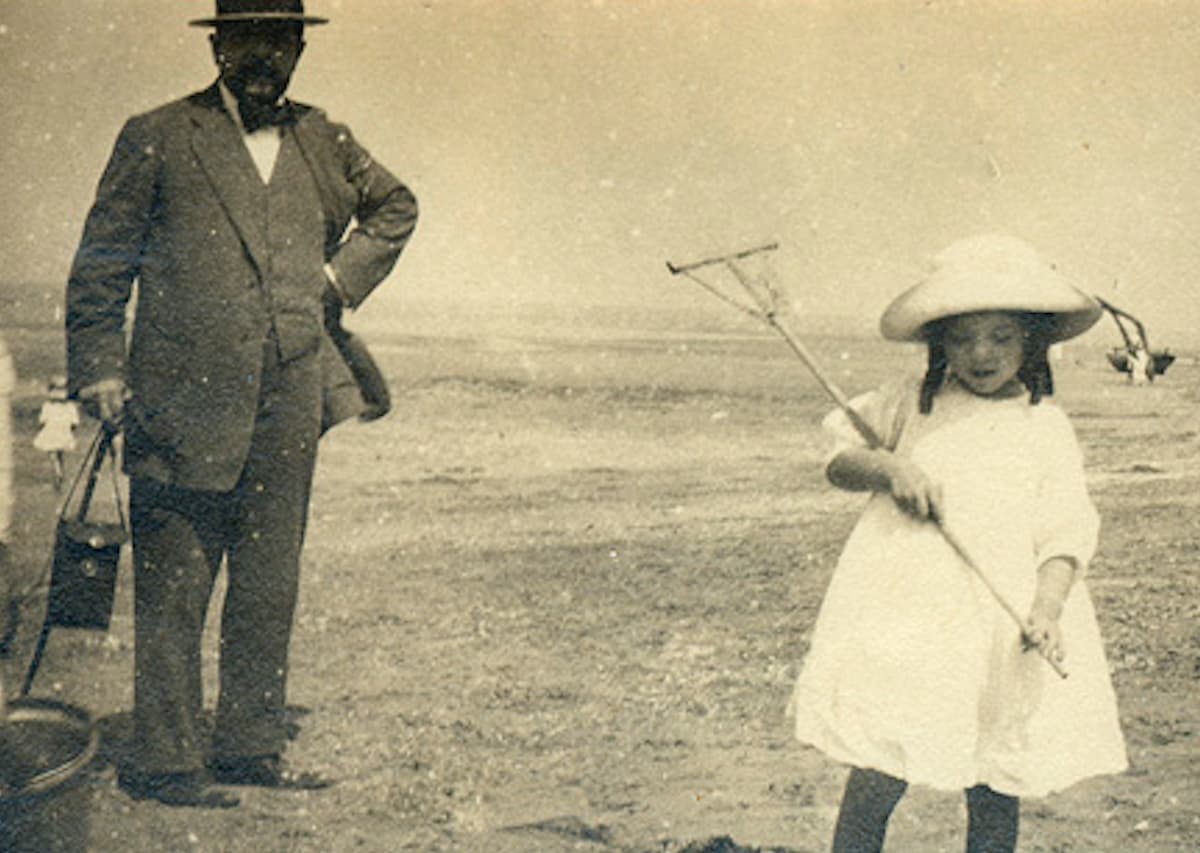
Debussy with his daughter Chouchou at a beach
From the beginning, Claude and Chouchou had a special bond.
Violinist Arthur Hartmann once wrote of Chouchou, “Chouchou was a perfect miniature copy of her father, with his peculiarities of appearance, the odd forehead, the black hair, warm eyes and mouth, the sturdy little body, and also the amazing independence of spirit.”
Igor Stravinsky once wrote that “her teeth were exactly like her father’s – i.e., like tusks.”
And yet she was very independent and had distinct preferences, especially when it came to music…even her father’s. In May 1909, Claude brought the five-year-old Chouchou to London to watch the rehearsals of Pelléas et Mélisande. At “La Scéne de la Grotte”, Claude felt his daughter’s hand search out his, and she said to him angrily, “You know, Papa, I don’t like that!”
Debussy: Pelleas et Melisande
Starting when she was young, Chouchou sang, played piano, and played violin. When she was seven, she even began composing her own songs.
Violinist Arthur Hartmann once described how, when she was a little girl, she and her parents came to visit. She was asked to sing but said she didn’t feel like it. Later, she informed the gathering she had changed her mind. Claude sat down at the piano to accompany her, and Chouchou sang in a very natural, very accomplished way.
The Music That Chouchou Inspired
In 1908, Debussy dedicated his piano work The Children’s Corner to Chouchou. Its dedication reads, “To my dear little Chouchou, with her father’s tender apologies for what follows.”
Debussy: Children’s Corner
One of the movements is called “Doctor Gradus ad Parnassum”, which was a satire on a 1725 counterpoint treatise by music theorist Johann Joseph Fux. The inclusion of this movement seems to indicate that he was secretly hoping Chouchou would follow in her parent’s footsteps and study music…which, to Claude’s great happiness, she did.
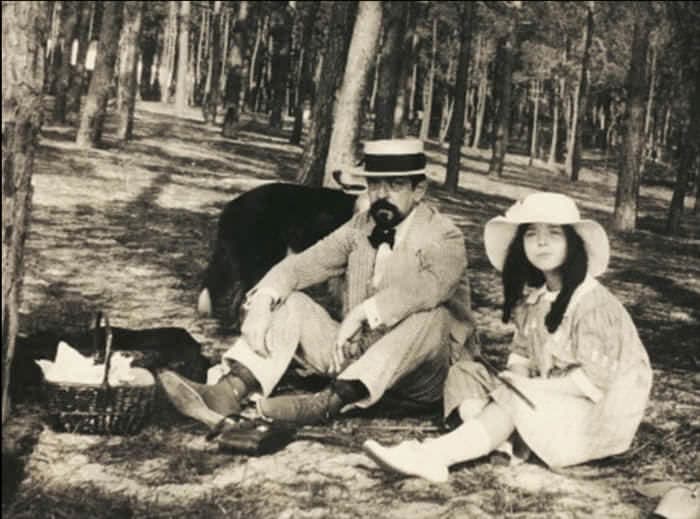
Claude-Emma with Debussy
The Children’s Corner consists of six movements. Each one is related to Chouchou or childhood in some way:
1. Doctor Gradus ad Parnassum – A satire on the Fux theory treatise.
2. Jimbo’s Lullaby – A lullaby for a famous circus elephant, who would later inspire the Disney film Dumbo.
3. Serenade for the Doll – A musical portrait of a porcelain doll featuring pentatonic scales common in Chinese music.
4. The Snow Is Dancing – A movement about snowfall featuring a childlike awe at the magic of winter weather.
5. The Little Shepherd – A musical depiction of a shepherd playing his flute.
6. Golliwogg’s Cakewalk – A golliwog was a doll whose design was rooted in the racist caricatures of blackface minstrelsy. Today, the word is a racial slur, but these dolls were very popular around the turn of the century.
The Death of Claude
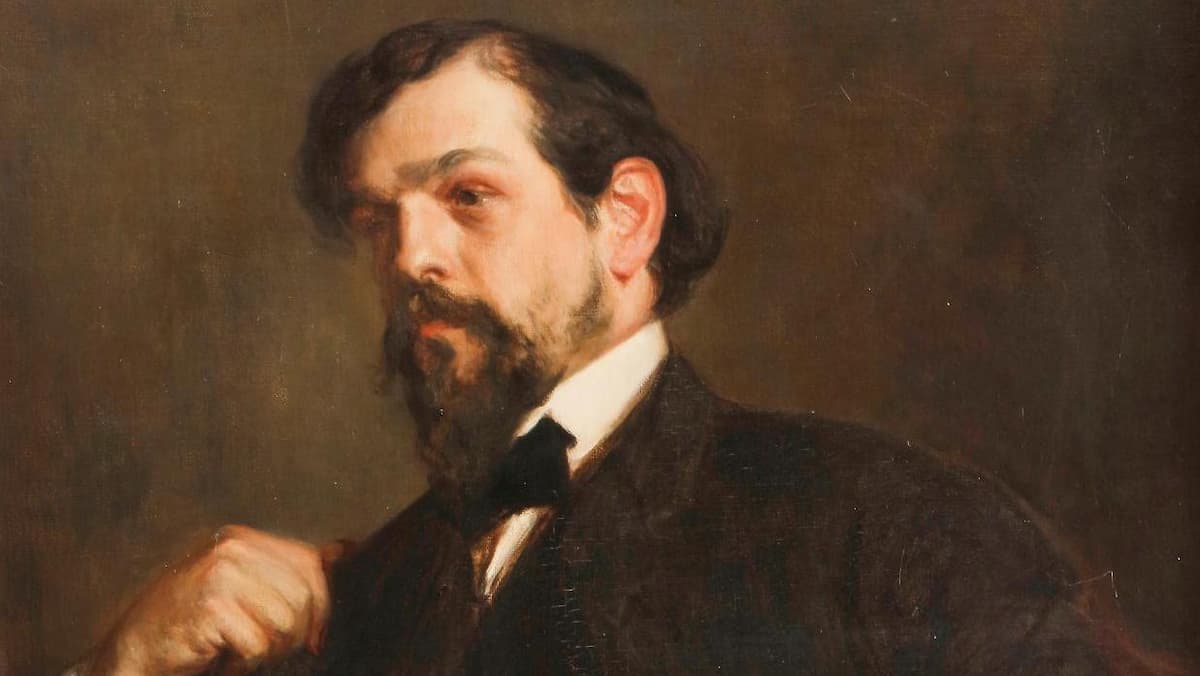
Jacques-Émile Blanche (1861-1942), Claude Debussy, 1902, oil on canvas, 95 x 74 cm/37.4 x 29.1 in.
In 1915, after years of health issues, Claude was officially diagnosed with rectal cancer. Claude was fifty-three years old, and Chouchou was ten.
His mortality and the idea of leaving his wife and child behind clearly weighed heavily on him. Before his first surgery, he wrote, “And you, my dear little one who will remain, love me in our little Chouchou… You are the only two souls who keep me from wishing to disappear without delay.”
He became obsessed with the idea of composing as much as possible before he died, writing, “I cannot say I feel any better, but I have made up my mind to ignore my health, to get back to work, and to be no longer the slave of this over-tyrannical disease. We shall soon see. If I am doomed to disappear soon, I wish to have at least tried to do my duty.”
Debussy died on 25 March 1918.
The Death of Chouchou
In July 1919, when she was thirteen, Chouchou got sick. Her illness – her doctors believed she had either diphtheria or meningitis – lasted for four days. She did not survive. She was buried in Passy Cemetery in Paris with her father.
Her mother Emma was beyond devastated by her grief. Months later, in January 1920, she wrote to a friend, “This little one was my only reason for living – with the beloved Master gone. Now death is the only thing that I want… My dear little Chouchou, so pure, so good, so intelligent, so delicate, and who contained so many precious memories, so much shared love, I will never see her again!”
Emma Bardac lived until 1934.
It remains one of the tantalizing mysteries of music history… What kind of musician would Chouchou Debussy have become if she had lived to adulthood? We’ll never know.
For more of the best in classical music, sign up for our E-Newsletter

